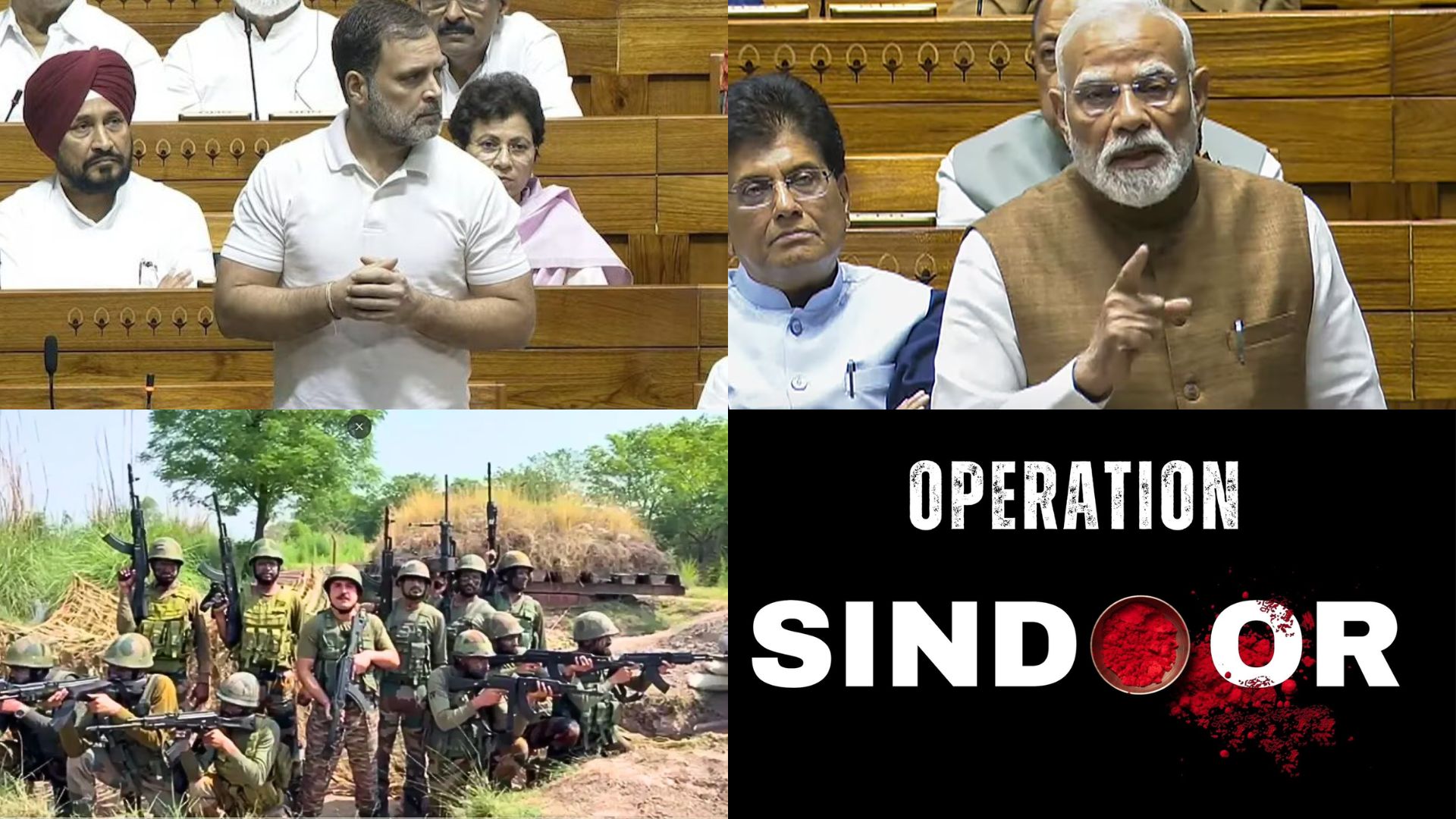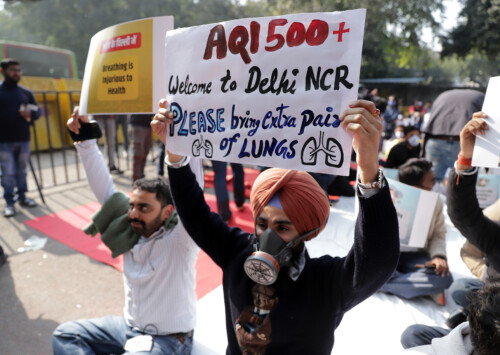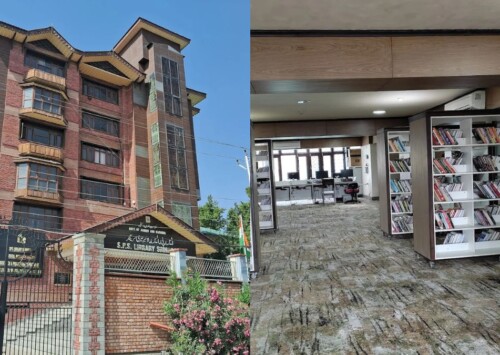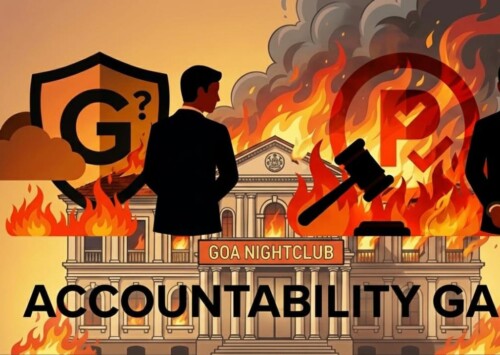Buried under the rubble: The truth after Pahalgam
Behind the missiles and ceasefire lies a war over truth

As both Lok Sabha and Rajya Sabha debate the outcomes of Operation Sindoor, focus has returned to the brief but opaque military stand-off with Pakistan that followed the Pahalgam massacre.
As both Lok Sabha and Rajya Sabha debated the outcomes of Operation Sindoor, focus has returned to the brief but opaque military stand-off with Pakistan that followed the Pahalgam massacre. The conflict raised more questions than answers, as Indian media ran unverified, often fictional reports until the guns fell silent, reportedly under pressure from United States President Donald Trump. In the debate, the government, too, continued to withhold details, choosing rhetoric over transparency.

As both Lok Sabha and Rajya Sabha debate the outcomes of Operation Sindoor, focus has returned to the brief but opaque military stand-off with Pakistan that followed the Pahalgam massacre.
After weeks of stalling opposition demands for a discussion on Operation Sindoor, the conflict with Pakistan that followed the Pahalgam massacre, when the government finally agreed to have a debate on the issue in the Parliament, it was expected to clear the air of suspense and mystery that has hung over exactly what transpired during the 3-day conflict, with claims and counterclaims by both the countries.
But after two days of debate in the Lok Sabha and Rajya Sabha, the public continues to grapple with a lack of clarity surrounding the events that unfolded in its wake. The military exchange between India and Pakistan after the Pahalgam massacre was swift, but what followed was a wave of confusion, fuelled by a media frenzy that prioritised narrative, often fictional, over fact, and a government that chose silence over disclosure. Even now, amid discussions in both Lok Sabha and Rajya Sabha, the line between strategic response and political theatre remains unresolved.
At the time of the conflict, the Indian government had said that the military operation targetted nine sites and aimed to address the threat of terrorism emanating from the region seeking to destroy major terror launchpads. It had added that the strikes were executed with high accuracy, targetting specific locations within Pakistan and Pakistan-occupied-Kashmir (PoK), including areas previously considered off-limits.
In response, Pakistan launched an offensive, using heavy artillery and drones, against military and civil targets in 15 cities across north-western India.
Pakistan had also claimed that it had shot down at least six aircraft of the Indian Air Force (IAF), including the much-vaunted Rafale, a claim that has continuously been refuted by India, which in turn said that it had destroyed several military bases of the enemy.
Fire hits home
However, just when India believed it had prevailed militarily, a political firestorm ignited at home.
The opposition Congress Party levelled explosive accusations against the government, alleging it had misled the nation by concealing the loss of frontline Indian Air Force fighter jets during the operation.
The charge gained traction after two senior officials of the Indian Armed Forces admitted that there had been losses suffered by the IAF. In an interview in Singapore, Chief of Defence Staff Lt General Anil Chauhan admitted that while India had suffered losses on the first day, it had struck back forcefully in the following days and brought Pakistan to its knees.
Days later, the same information was handed out by another official of the Indian Army, this time in Indonesia. Captain Shiv Kumar, India’s Defence Attaché to Indonesia, made off-the-record remarks during a closed-door seminar in Jakarta where he acknowledged what New Delhi had been officially denying for long, that India had suffered aerial losses.
The two admissions were used by the opposition to grill the government on coming clean about what had happened during the conflict. Congress leader Jairam Ramesh amplified the storm via his official X (formerly Twitter) account, accusing the BJP government of “burying the truth” from the Indian people. The post went viral, especially within defence circles and strategic communities.
What started with whispers in Singapore and Jakarta had now grown into a thunderous national reckoning.
The revelations by the military officials have raised several questions, including why these details are emerging now and why the Government of India has not disclosed the full account of the operation.
According to experts, several reasons are at play as that why the government of India has not revealed full details of the incident.
Aluru Chaitanya Sai, an assistant in the Ministry of Mines, the Government of India’s decision to withhold full details of the incident is likely due to political constraints.
“The information might be confidential. Plus, it was likely a political move in response to public pressure after the Pahalgam attack. That is why the extent of India’s success in the operation remains unclear,” Sai tells Media India Group.
Regarding the role of the media, especially the broadcast media during the conflict, he adds that since certain media outlets are influenced by political parties, they often follow the narratives set by them, which may explain the silence of Indian media on this issue.
“Most media outlets today are puppets of one political party or another. There is heavy influence from the political side, and that is why they end up acting in line with those interests,” adds Sai.
However, according to Air Marshal (Retd) M Matheswaran, President of the Chennai-based Peninsula Foundation, the government will disclose only what it deems necessary. In this case, the details were withheld out of necessity.
“The government will provide what is necessary and accurate. Yes, there was a loss, but not the way it is being portrayed. He may have said it, but he did not specify the number of aircraft lost. The focus should be on the operation’s objectives. You do not judge a mission just by day-one losses, but by what was achieved overall. Like the Director General of Air Operations said, losses happen in conflict, but what matters is the outcome. The outcome was clear, Pakistan ran to the US, India refused, and then Pakistan asked for a ceasefire. We imposed our will, sent a clear message, and conducted the operation on our terms. That is what matters,” Matheswaran tells Media India Group.
He further added that the media should have taken a more holistic view of the conflict.
“The media should be asking whether India achieved the objectives it set, because that is what matters. You have to take a holistic view. Whether any aircraft were lost is secondary and will become clearer over time. Even the CDS said we may have made a couple of mistakes early on, but we regrouped and imposed our will by the third and fourth day. All wars involve losses, look at Ukraine. Russia suffered early but is now pushing forward. That is why conflicts must be assessed in totality. As for the remarks in Indonesia, they answered why India did not go for a full military escalation from the start. The intent was clear, punish Pakistan for the Pahalgam attack by hitting terror infrastructure, not military targets. The Ministry of External Affairs made that distinction very clear,” adds Matheswaran.
As the dust settles after the debate on the conflict, the government has maintained that India’s response to the Pahalgam massacre was fierce, precise and effective. Yet, in the absence of full disclosure, public trust remains in limbo. The issue now is not just about the number of jets lost, but how wartime narratives are shaped and controlled. At a time when perception rivals firepower, India’s toughest battle may lie not across the border, but within its own communication lines.









